Kintsugi Omakase is a small space with minimalist decor, decorated by colorful Japanese alcohol bottles and pottery that fill the room. Behind a sleek countertop, chef Victor Chen prepares four distinct tiers of omakase experience for both lunch and dinner, serving 10 patrons at a time. For $60 per person, I enjoyed “The Lunch Rush Omakase,” the restaurant’s sole lunch option. Featuring 12 courses of seasonal appetizers and handmade sushi, this menu is a great take on high-quality omakase at a relatively accessible price point.
In Japanese, omakase translates to “I’ll leave it up to you,” and this phrase undoubtedly summarizes my dining experience. Chef Chen and the waiting staff gracefully cared for and served their customers, with their faces expressing joy for every bite I took.
As an appetizer, I had a small portion of a brightly colored potato salad, topped with three crunchy pieces of soy shrimp originating from the Arctic Circle. The potato was surprisingly light, possessing hints of citrus and setting the meal off to a pleasurable start.
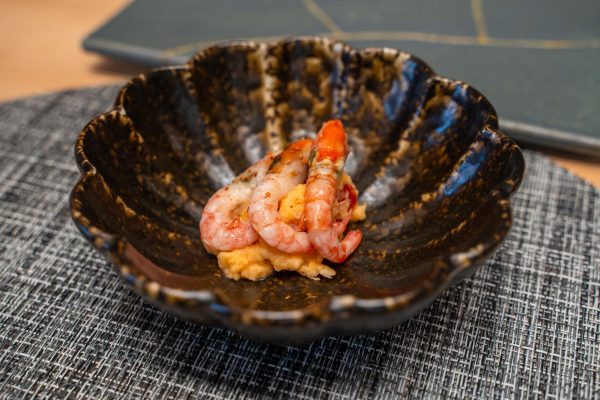
The sushi courses began with a Greek orata nigiri, beautifully scored and topped with soy sauce, bits of wasabi and orange zest. The fish was mildly flavored and slightly fatty, but carried strong touches of wasabi which caught me by surprise.
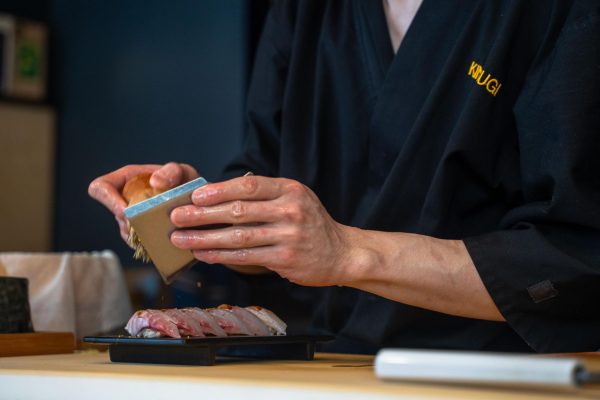
Next was the hotate, or scallops, from the Hokkaido region in Japan, served as a nigiri with soy sauce rice, which complemented the soft scallops very well. Though it didn’t melt in my mouth, it was still quite an enjoyable bite.
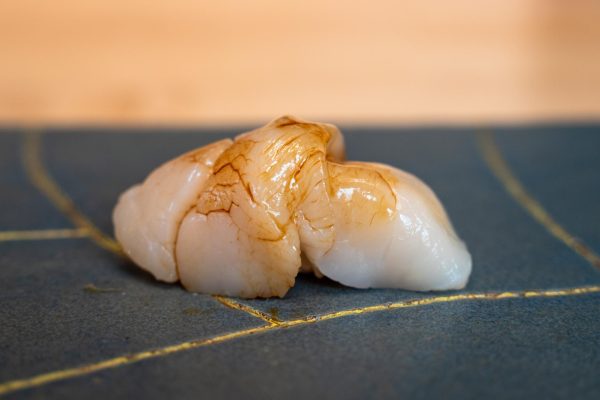
The scallops were followed by a razor clam nigiri sourced from Massachusetts, and it stood out in both flavor and appearance. Topped with some soy sauce, the somewhat oblong clam was chewy yet soft, but certainly saltier than the others. The heavy salt, however, was perfectly balanced by the tones of citrus.
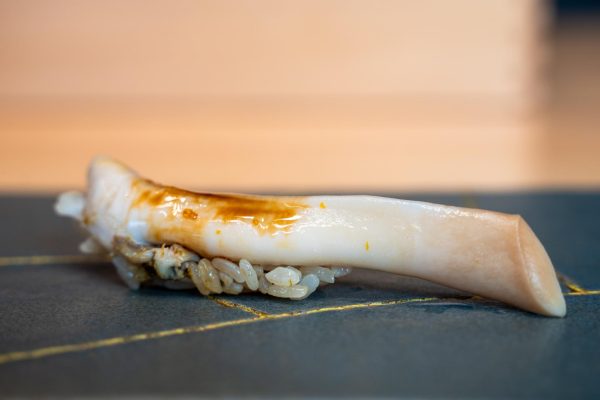
The Arctic char nigiri sourced from Iceland was perhaps my favorite part of the meal. Arctic char could be described as the fattier cousin of the Atlantic salmon, and this nigiri blew my mind. The moment I took a bite, it melted in my mouth like butter. The somewhat numbing sensation was balanced with an unexpected spice.
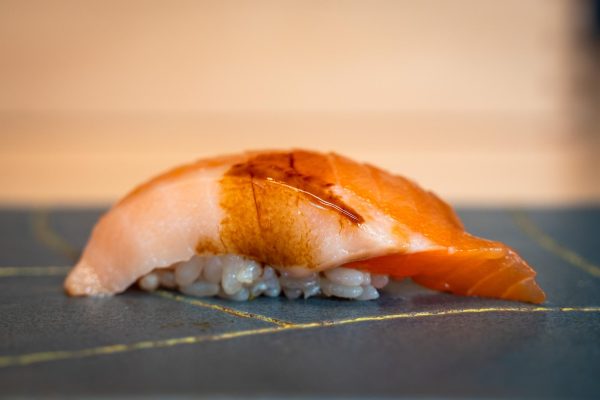
In contrast to the Arctic char, the following dish was a gorgeous and lean Akami Zuke, or soy-marinated tuna nigiri. Although it had a pleasurable acidic and wasabi-like taste, what stood out the most was its deep crimson hue, and it made me realize that the aesthetic is just as important as the flavor in omakase.
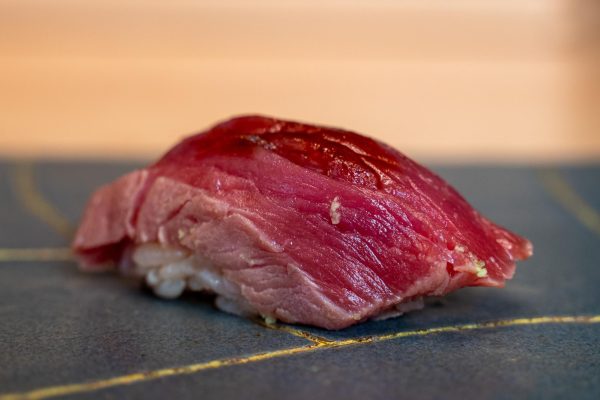
Another standout dish was the mixed two soy-cured egg yolks with rice, served with a small piece of sablefish originated in Alaska and topped with a bit of wasabi in a beautiful bowl. Unlike the other dishes, this one was quite warm, especially upon the first bite. The fish had a smooth buttery texture and the rice blended perfectly with the fish. Though it was a very small portion, the dish was slightly heavy due to the high-fat content, but it went above and beyond my expectations.
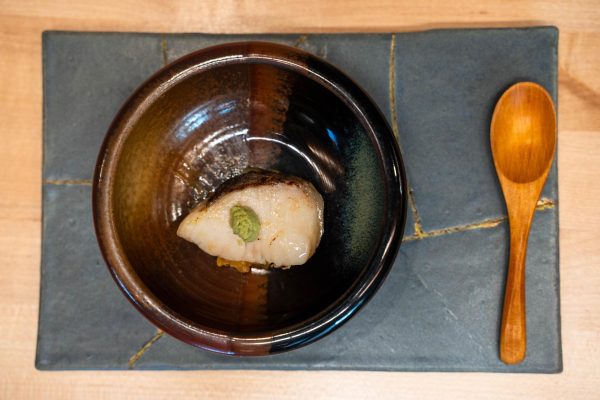
With this next dish, rather than a slice of fish, chef Chen prepared two small monkfish liver rolls, and I was joyfully surprised. Monkfish liver is a delicacy in Japan, and honestly, it didn’t sound quite appetizing at first. However, it was extremely creamy and rich, and despite its texture, it didn’t feel heavy like some of the fattier fish earlier in the meal.
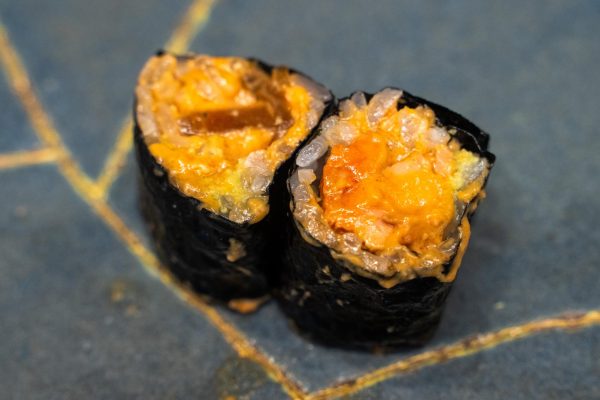
Finally, to finish the savory portion of the meal, chef Chen prepared a tube-like hand roll with fatty tuna and sweet onions. In all honesty, after the delicately crafted and sense-stimulating dishes I enjoyed before, it was disappointingly underwhelming. It didn’t stand out in any way and felt out of place, especially considering what chef Chen has shown he is capable of. If it had been placed somewhere in the middle of the meal, I wouldn’t have minded as much, but since it was the last dish, it was a somewhat unexciting way to conclude such an enjoyable lunch.
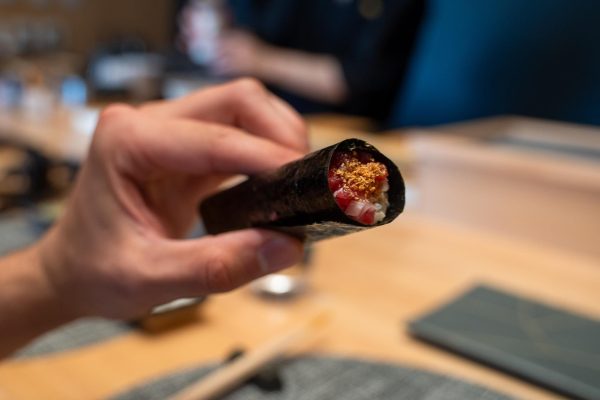
I was offered a complimentary Hojicha tea, or roasted green tea, to wash down the meal, and it was served in a decorative cup decorated with drawings of various sushis often served in omakase meals. Though not included in “The Lunch Rush Omakase,” chef Chen kindly offered dessert — a tamago, or egg, creme brulee, which resembled an egg custard with a layer of burnt sugar on top. It wasn’t too dense, nor was it too creamy; it had the perfect level of sweetness, a common attribute of most Japanese sweets. It was the perfect ending to the fine meal I had enjoyed, and very kind of the chef to include it in the meal.
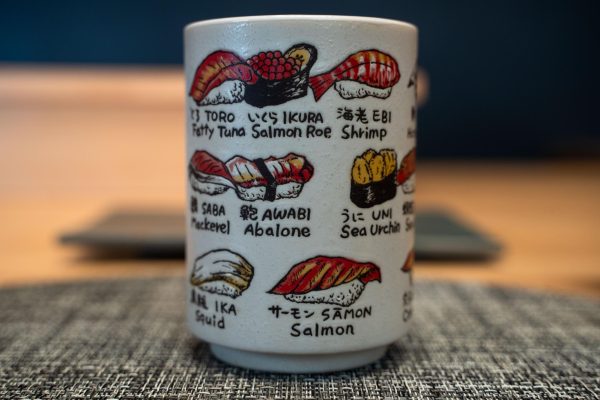
Without a doubt, I am comfortable with saying that I would leave it up to chef Chen again to prepare my meal and I would gladly return whenever I’m craving an exciting yet equally calming omakase experience.
Compared to most omakase restaurants, Kintsugi Omakase isn’t ridiculously expensive and inaccessible to the point that it feels pretentious. It’s a humble establishment most interested in making sure its guests feel welcomed and have an experience similar to, if not better than, other high-class omakase eateries.
Contact Gabriel Giacomelli at [email protected].
























































































































































